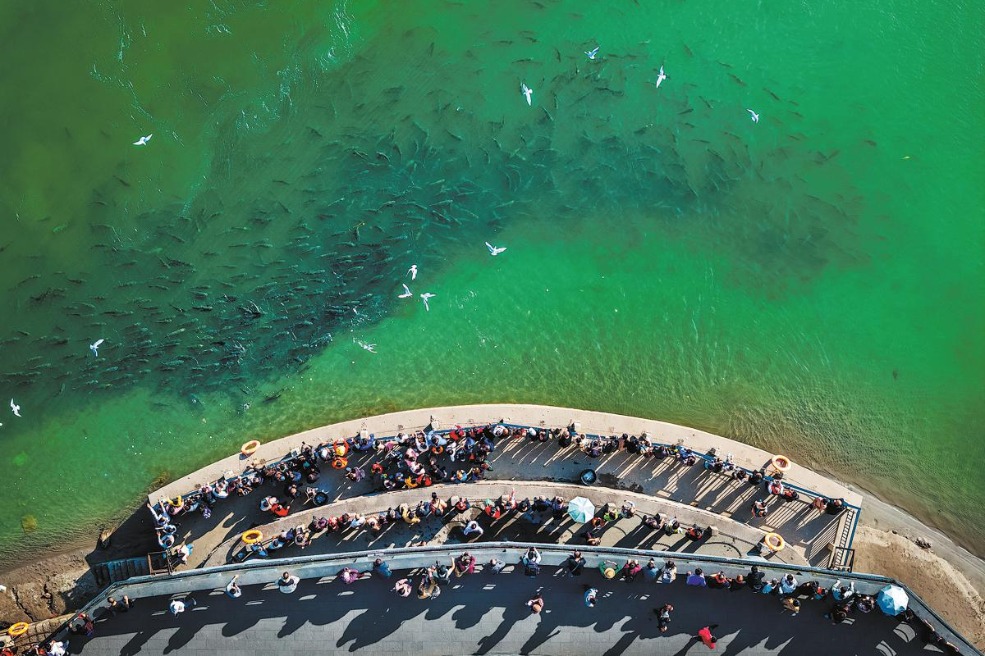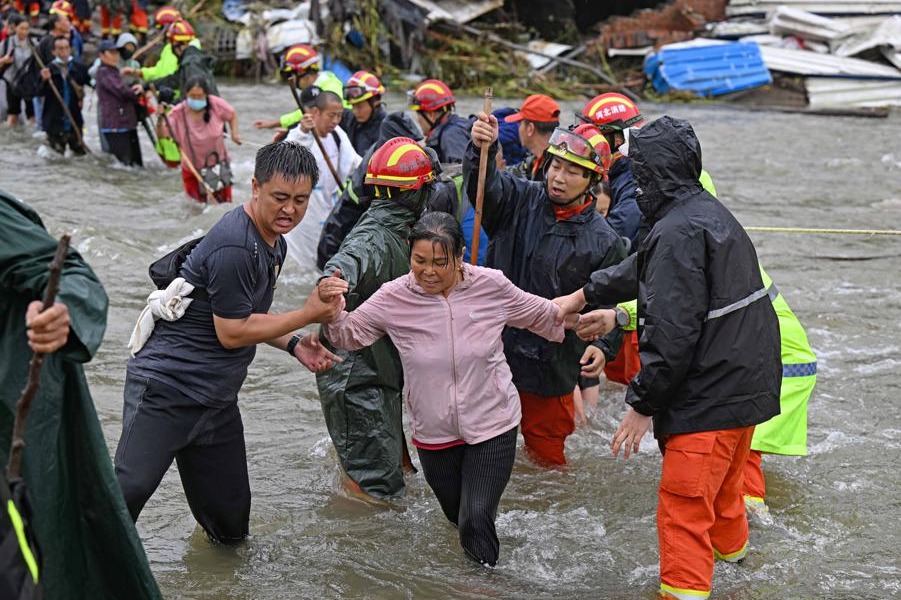Typhoon Co-may brings strong winds, rainfall


Typhoon Co-may made landfall on Wednesday morning, bringing torrential rains and strong winds to eastern China and prompting evacuations and major transportation disruptions in Shanghai and the provinces of Zhejiang and Jiangsu, which bore the brunt of the storm's impact.
Co-may, the eighth typhoon of the year, hit Zhoushan in Zhejiang province, at 4:30 am, with maximum sustained winds of 82.8 kilometers per hour near its center and a minimum central pressure of 975 hectopascals, according to the National Meteorological Center. It made a second landfall in the coastal area of Shanghai's Fengxian district at 4:30 pm, becoming the 13th typhoon to make landfall in the city since 1949.
Shanghai raised its rainstorm warning to orange by noon on Wednesday and activated Level II emergency response protocols. By 10 am, heavy rainfall had been reported in half the city's districts. China uses a four-tier weather warning system, with red the most severe, followed by orange, yellow and blue. It also has a four-level emergency response system, with Level I the most severe.
A total of 283,000 residents in Shanghai's waterfront areas were evacuated, and more than 1,900 settlement points were set up across the city. Construction was suspended at 4,628 sites.
Shanghai Airport (Group) Co said around 30 percent of flights were expected to be affected, with about 640 flights scheduled for cancellation, including 410 at Pudong International Airport and 230 at Hongqiao International Airport.
China Railway Shanghai Group imposed speed restrictions on affected rail lines, while some trains were temporarily suspended or had their operating sections curtailed.
Although the city's metro system maintained normal operations, all inner-city ferry services were suspended starting at 7 am, and highway speed limits were reduced to 60 km/h.
The 632-meter-tall Shanghai Tower, China's tallest building, temporarily closed its observation deck and related facilities due to safety concerns. Waterfront platforms along the Huangpu River were cordoned off because of the combined effects of high tides and the typhoon.
Chen Tao, chief forecaster at the National Meteorological Center, told China Meteorological News that although Co-may was not particularly strong in terms of intensity, its slow movement and prolonged effects posed significant risks.
"The typhoon's weak steering flow after landfall results in prolonged precipitation periods with high-intensity short-term rainfall, leading to substantial accumulated rainfall," Chen said.
Zhejiang issued a red alert for geological disaster risks. Hangzhou International Airport canceled eight flights as a precaution. As of 12:30 pm, it had handled 342 flights with a departure punctuality rate of 76.1 percent.
The province's water resources department reported the first numbered flood event of the year in the Yongjiang River basin. In Ningbo, all summer school activities and off-campus training programs were suspended.
Jiangsu province upgraded its heavy rain warning to yellow. A Level III typhoon emergency response was activated on Wednesday, leading to school closures in several cities.
The tsunami warning center under the Ministry of Natural Resources detected tsunami waves triggered by an earthquake off Russia's Kamchatka Peninsula and issued a yellow tsunami warning Wednesday.
Despite the combined impact of tsunami waves and Typhoon Co-may, water levels at Shanghai's coastal monitoring stations were not expected to exceed warning thresholds, the Shanghai marine monitoring and forecast center said. The yellow tsunami warning for Zhejiang and Shanghai was lifted around 3:30 pm.
Authorities have issued broader warnings for secondary disasters such as geological hazards, flash floods and urban waterlogging in affected areas over the next three days. The public is advised to avoid mountainous areas and riverbanks, as geological disasters can occur even after rainfall has temporarily subsided.
As Typhoon Co-may moves northwestward, authorities remain on high alert and urge residents to stay informed and follow safety guidelines.
zhengzheng@chinadaily.com.cn





































